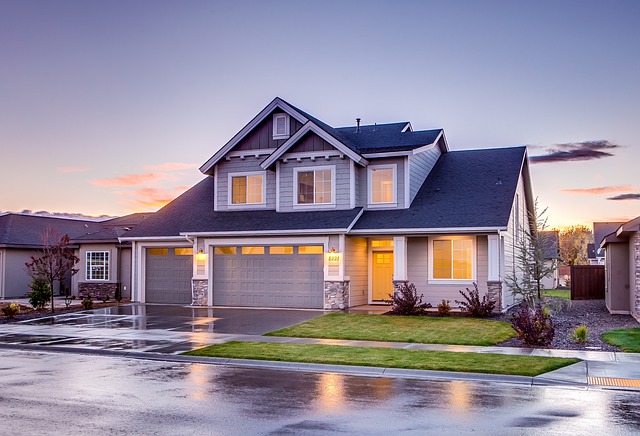Knowing your neighbors may make a tremendous difference in preventing potential threats to your house before they escalate into an emergency. Having a watchful neighbor may be a huge help during a break-in or accident when you’re not around to keep an eye on things. In this article, we’ll explore how knowing your neighbors makes you a safer homeowner by providing an extra line of defense.
Assessing the Safety of Your Neighborhood
A safe neighborhood is everything that everyone wants. There are specific points to consider when evaluating a neighborhood’s safety, including the housing condition, areas of vulnerability, and the character of certain areas.
Evaluating the Condition of Housing and Buildings
If your doors and windows are secure and in good shape, your home will be less of a target. You can add a security alarm or other deterrents to ensure your property’s safety further. Contact your insurance company, as discounts are often available for investing in additional security measures. Consider coordinating with your neighborhood watch organization to help those who can’t afford to update their houses financially.
Identifying Areas of Vulnerability
Regarding home invasions and burglaries, certain rooms and spaces are easier targets than others because of their accessibility and exposure. Burglars primarily focus on ground-level entryways, such as doors and windows on the ground floor. These spots offer quick and simple access to the house while still being hidden from sight by barriers like fences or trees.
Understanding the Character of Various Areas
Your neighborhood may have varied degrees of security depending on where you go. The business districts of certain areas thrive, while others are predominantly residential. If you know what to expect from these regions, you can make better choices regarding your home’s safety.
Working With Your Community to Improve Safety
Improving neighborhood safety is a collective effort, so collaborating with other residents can lead to a safer living environment. These are the steps you and your neighbors can take to improve your neighborhood’s safety:
Starting a Neighborhood Watch Program
If you do not have a neighborhood watch program, consider starting one. These programs involve people from the neighborhood watching each other’s backs and reporting suspicious activities. They can lead to effective crime detection and enhance overall security.
Keeping Up Your Yard
Maintaining your yard and encouraging your neighbors to do the same can make your neighborhood less attractive to criminals. A well-kept neighborhood clearly conveys that residents are invested in their community’s safety.
Installing a Security System
While collective efforts are essential, individual home security measures also play a role. Think about installing a security system for home protection for more extensive surveillance. High-level systems often include features like security cameras and smart locks.
The Impact of Neighborhood Safety on Home Values
Neighborhood safety and home values are connected. A safe area can significantly enhance property values, while the opposite is true for neighborhoods with higher crime rates or perceived safety risks. Every investor and homebuyer will prioritize safety first when considering investing, and this emphasis directly affects property prices. The most essential benefits of safe neighborhoods include:
- Increased Desirability: Safe neighborhoods are more attractive to potential buyers. The perception of security and reduced crime rates can increase demand for homes in these areas, allowing sellers to command higher prices.
- Stability: Neighborhoods with a reputation for safety often exhibit greater stability in property values. When residents feel safe and sound, they are more than happy to invest in their homes, positively affecting the whole community.
- Lowered Insurance Prices: Insurance companies offer discounts for people living in safe areas. These reduced prices can make living more affordable, which makes the area more attractive.
The Importance of Community Involvement
The cornerstone of neighborhood and home safety is community involvement. When the community is actively involved, collective responsibility arises and helps deter criminal activity. Here’s why community involvement is crucial for maintaining neighborhood safety:
Increased Awareness
The active involvement of the community can gain awareness of safety issues. People participating in gatherings and online forums are continuously informed about the problems. Increased awareness can lead to improving lighting in dark areas or working on plans to prevent property crimes.
Property Maintenance
Taking care of public areas and properties is another way for people to become involved. The outward appeal of an area improves when people participate in neighborhood cleanup and improvement efforts, maintain their properties, and report any instances of property neglect or abandonment they observe. A cleaner neighborhood is less likely to be a target for criminals.
Youth Engagement
Getting in touch with the younger generation is crucial for long-term safety. After-school programs, sports leagues, and mentorship opportunities are all examples of community-based projects that aim to improve the lives of local youngsters. Communities may lessen young people’s propensity for crime by encouraging them to participate in positive activities.
Final Words
A vital first step in protecting your property is a thorough risk assessment of your living area. You can make your neighborhood safer by doing a vulnerability assessment, assessing the state of the housing stock, and taking preventative measures with your neighbors. Keep in mind that ensuring the safety of your area is a group endeavor that improves the standard of living for everyone.








Recent Comments